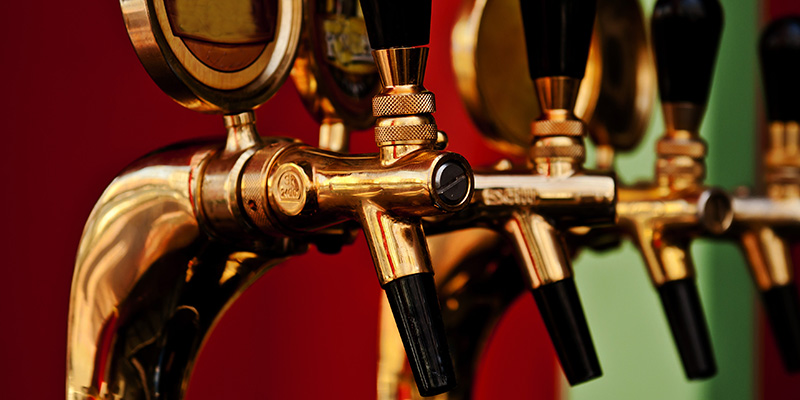The term “real ale” sounds kind of like an innocuous, unspecific qualifier—kind of like “sick moves,” or “power solo.” But “real ale” isn’t something people say after they take a sip of bodacious beer. It’s actually a specific definition, and the subject of some pretty real controversy in the U.K.
Not to get too deep real fast, but in case you’re wondering what ale vs lager is, check here. Right now, we’re only dealing with ale—“real” ale, to be precise. It’s a term that four British dudes came up with in 1971, after getting fed up with the influx of two-dimensional mass produced beers that were taking over their pubs and bars. Their solution was to form a coalition—the Campaign for the Revitalization of Real Ale (later named the Campaign for Real Ale, aka CAMRA). And while four angry dudes don’t always make a splash—unless they’re, say, The Ramones—CAMRA grew into an organization with about 165,000 members today.
Exactly what were they supporting? According to CAMRA, “real ale” is “a natural product brewed using traditional ingredients and left to mature in the cask (container) from which it is served in the pub through a process called secondary fermentation”—the stuff that makes Champagne so special. “It is this process which makes real ale unique amongst beers and develops the wonderful tastes and aromas which processed beers can never provide.”
Ah, and there’s the difference. “Real ale” is, arguably, the folk singer to the autotunes that is “processed beer.” While “real ale” is a “natural, living product,” processed beer is “chilled and filtered to remove all the yeast,” and then “pasteurized to make it sterile.” While that processing may result in a longer shelf-life, it also (per CAMRA) “removes a great deal of the taste and aroma associated with real ale.” Not to mention carbonation doesn’t happen naturally in processed beers, as it does in the secondary fermentation of real ale. Instead, “either carbon dioxide or a mixture of carbon dioxide and nitrogen has to be added to ‘fizz up’ the beer. This,” again per CAMRA, “creates an unnaturally fizzy beer rather than the gentle carbonation produced by the slow secondary fermentation in a cask of real ale.”
In an age of authenticity- and origin-lust, you’d think “real ale” would be a dominating campaign. The yeast remains in the beer, the carbonating fermentation is natural rather than forced (and so a finer “expression” of the beer itself). Except it seems to exclude a fair number of craft beers that feel they deserve the moniker “real,” or just think it’s conceptually moot.
Witness the argument of Brew Dogs, the UK-based experimental brewers (they came up with the 32% Tactical Nuclear Penguin) who are embracing craft beer, and kind of rocketing it into the next level. For them, the concept of “real ale”—which does, arguably, seem to desire to maintain something gritty, native, and (most importantly) flavorful in an ale—is outdated. “The term ‘Real Ale and its definition no longer mean anything. CAMRA have lost sight of the beer industry and continue to impose 1970’s arbitrary distinctions which no longer apply.”
Rather than natural secondary carbonation and/or yeast filtering, the Brew Dogs argue that “the distinction should be as simple as beer brewed for taste versus beer brewed for volume. Regardless of dispense style or production method, craft beer is brewed for taste.”
The argument isn’t just relegated to the U.K. The definition of craft beer isn’t quite settled, though it may be getting there. But questions of volume (witness the success of Sam Adams and Sierra Nevada, both originally “craft brewers”) seem to oust successful craft brewers—perhaps an unfair punishment?
Calling something “real ale” because yeast remains (imparting more flavor) and the beer is served from the cask in which it undergoes secondary fermentation might be a bit of a blanket statement—though understandably, in terms of reactionary vocabulary, it makes a bit of sense (when two-dimensional beer is overcrowding the market). The question is, is craft beer not made under those standards not “real”? And—not to get too David Lynch here—but what qualifies anything as “real”?

